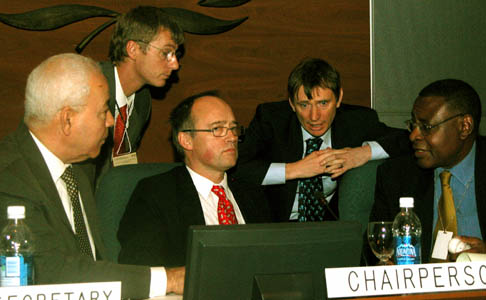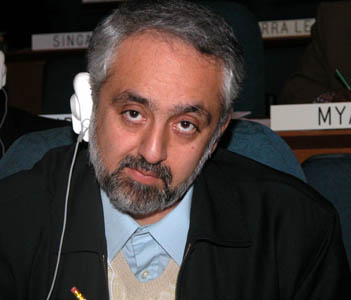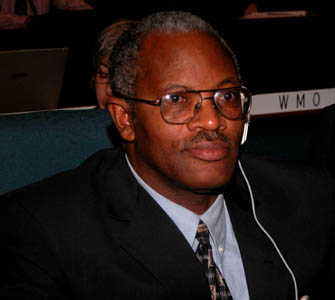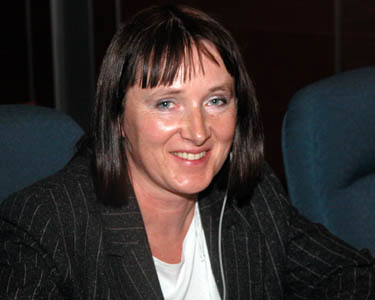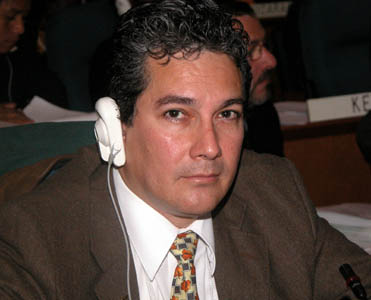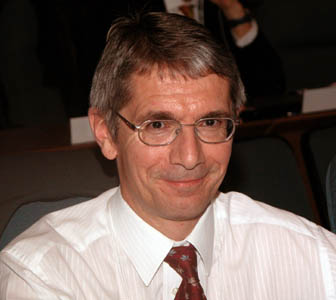OPENING PLENARY:
|
|
|
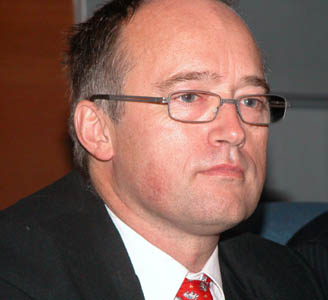
|
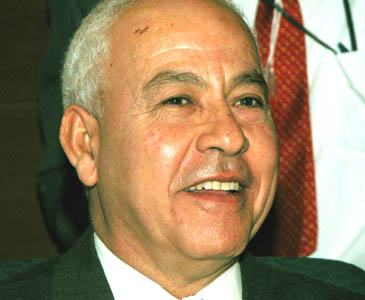
|
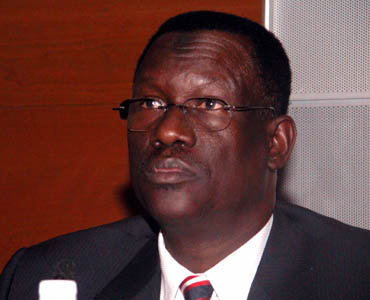
|
|
In opening the meeting,
Chair
Christian Prip
(Denmark) stressed the need for:
parties to contribute quality information for a proper assessment of implementation; sectoral
integration of biodiversity concerns; and promotion of
synergies at the national level.
|
In
his final meeting as CBD Executive Secretary,
Hamdallah
Zedan
emphasized the
Convention’s major achievements,
inter alia: rapid progress in operationalizing access
and benefit-sharing (ABS)
provisions; adoption of the Cartagena Protocol; and
recognition of biodiversity's role in human
well-being and poverty alleviation.
|
Bakary Kante,
UNEP, speaking for UNEP
Executive Director Klaus Töpfer, stressed
the
2010 target to significantly reduce biodiversity loss, UNEP’s
work
in supporting
the CBD, and the
importance of ecosystem services.
|
|
|
|
|
|
|
|
|
|
|
|
IRAN, speaking for
the ASIA AND THE PACIFIC GROUP, noted two priorities for SBSTTA-11: adopting clear
recommendations on invasive alien species, and emphasizing the role of biodiversity in
disaster mitigation and adaptation, and other climate change-related
issues. TANZANIA
, speaking for the
AFRICAN GROUP, prioritized: a training fund for the GTI; incentives for biodiversity
conservation outside protected areas (PAs); community management of coastal and marine
PAs; and capacity building for implementing the dry and sub-humid lands
work programme.
Poland
for CENTRAL AND
EASTERN EUROPE,
EL SALVADOR on behalf of the
LATIN AMERICA AND THE CARIBBEAN, and the
UK
for the EU, welcomed
the informal joint meeting of the subsidiary
bodies of the CBD and
the UN Framework Convention
on Climate Change
to be held on Wednesday.
Above photos L-R: Ashgar
Mohammadi Fazel (Iran); Rawson Piniel Yonazi (Tanzania);
Bozena Haczek (Poland); Jorge Ernesto Quezada Diaz (El
Salvador), and Roy Hathaway (UK)
|
|
|
|
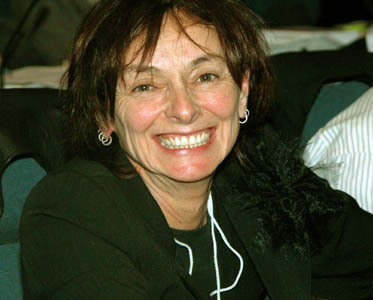
|
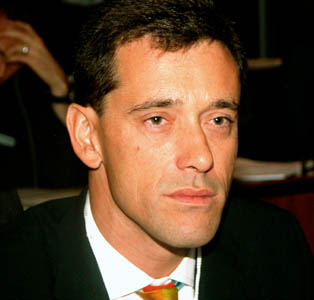
|
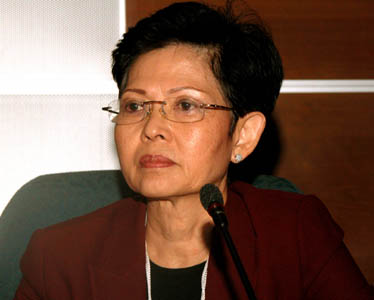 |
|
|
|
|
The
FAO
outlined its
contribution to the Convention’s implementation, underscoring
its role in fisheries, forestry and agricultural sectors.
Above photo: Linda Colette (FAO) |
The
UN UNIVERSITY highlighted its work on the MA and on deep
seabed genetic resources.
Above photo: Sam Johnston (UNU) |
Chaweewan
Hutacharern (Thailand) was elected as Rapporteur for the
meeting. |
|
|
|
|
|
|
|
SECOND
GLOBAL BIODIVERSITY OUTLOOK:
|
|
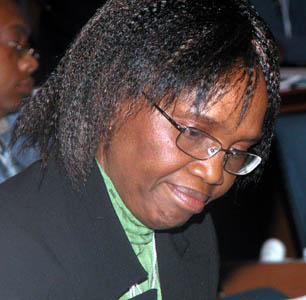
|
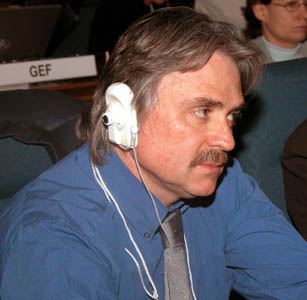
|
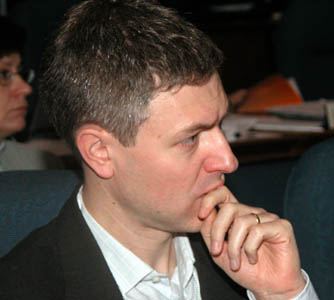
|
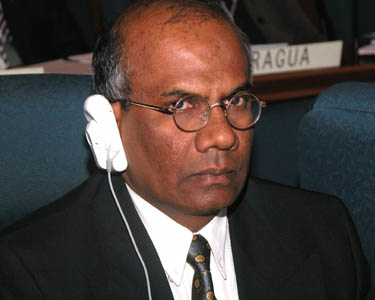
|
|
|
|
|
|
SOUTH
AFRICA
called for greater inclusion of indicators relating to
benefit-sharing.
Above photo: Maria Mbengashe
(South Africa)
|
On GBO-2, SWITZERLAND proposed that
the Secretariat prepare an executive summary targeted to the general
public.
Above photo: Robert Lamb (Switzerland)
|
SWEDEN
highlighted the importance
of evaluating indicators’ performance.
Above photo: Lars Berg (Sweden)
|
MALAYSIA asked that the report mention the effects on biodiversity of the December
2004 Tsunami.
Above photo: Letchumanan Ramatha (Malaysia)
|
|
|
Working
Group I
|
|
|
|
GLOBAL
TAXONOMY
INITIATIVE:
|
|
|
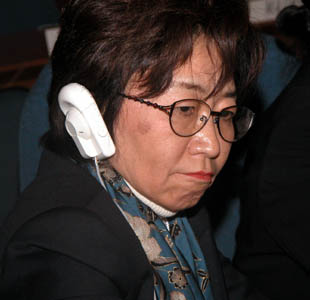
|
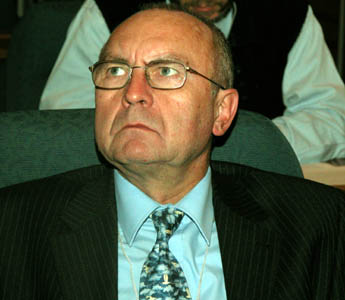
|
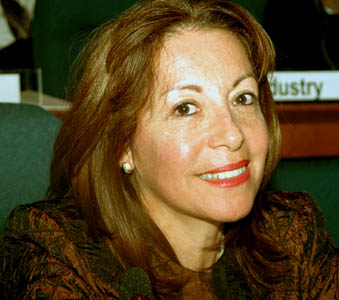
|
|
|
|
|
JAPAN
proposed minimizing the time between application and funding of
GTI projects for areas where urgent implementation is needed.
Above photo: Junko Shimura (Japan)
|
BELGIUM
,
supported by many, suggested that the GEF fund national GTI
focal points through its enabling activity projects.
Above photo: Jackie Van Goethem (Belgium)
|
The
GLOBAL BIODIVERSITY INFORMATION FACILITY outlined its efforts to
make taxonomic data freely available over the Internet and its
contribution to capacity building in taxonomy-related fields.
Above photo: Beatriz Torres (GBIF)
|
|
|
|
MILLENNIUM
ECOSYSTEM ASSESSMENT:
|
|
|
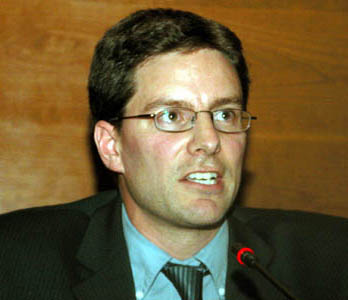
|
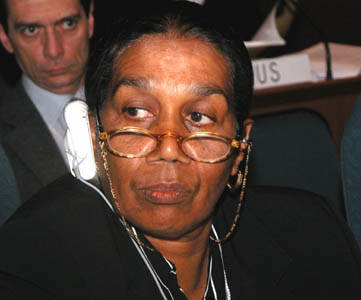 |
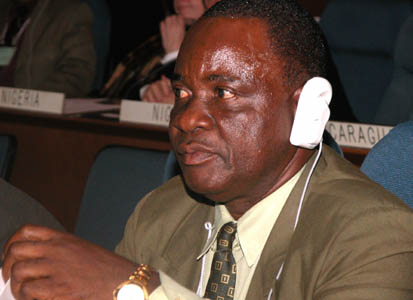 |
|
|
|
|
Neville Ash,
MA
Secretariat, outlined the MA, the
largest-ever international assessment of the consequences of
ecosystem change for human well-being. He highlighted
unprecedented rates of biodiversity loss leading to a decline in
ecosystem services, especially for the poorest.
|
JAMAICA said land-use change is due not only to agriculture but also
to commercial and industrial developments.
Above photo: Elaine Fisher (Jamaica) |
LIBERIA stressed the need to mitigate the effects of inappropriate land use practices, particularly from agricultural expansion, farming practices and mining schemes.
Above photo: Ben Turtur Donnie (Liberia)
|
|
|
|
Working
Group II
|
KEYNOTE PRESENTATIONS:
|
|
|
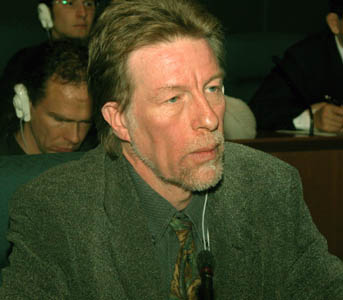
|
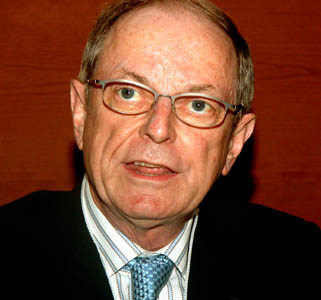
|
|
|
|
Nick
Davidson, Ramsar Convention on Wetlands, briefed
participants on the CBD-related outcomes of Ramsar COP-9.
|
Jan
Valkoun, International Center for Agricultural Research in the Dry Areas, presented on biodiversity, land degradation and poverty alleviation in dry and sub-humid lands. He noted widespread poverty in dryland areas and the importance of dryland biodiversity for nutrition, health, and livelihoods.
|
|
|
|
DRY
AND SUB-HUMID LANDS BIODIVERSITY:
|
|
|
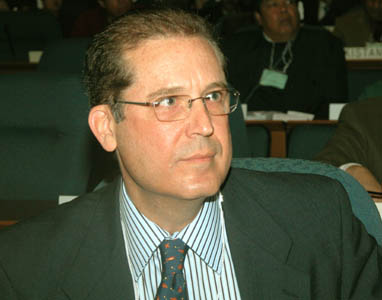
|
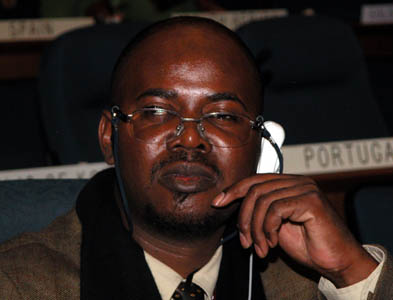
|
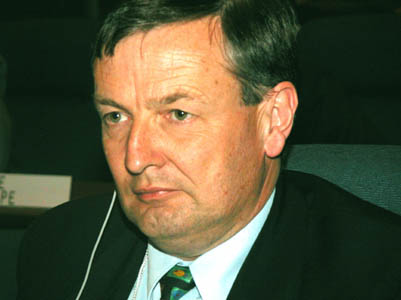
|
|
|
|
|
BRAZIL suggested adding a reference to the International Treaty on Plant Genetic Resources for Food and Agriculture, and to national legislations on ABS.
Above photo: Hadil Fontes Da Rocha Vianna (Brazil)
|
NAMIBIA
urged focusing on recommendations on dryland biodiversity use
options that benefit local communities.
Above photo: Sem Shikongo (Namibia)
|
NEW ZEALAND stressed the need to be mindful of the CBD’s mandate on climate change.
Above photo: Andrew Bignell (New Zealand)
|
|
|
|
|
|
